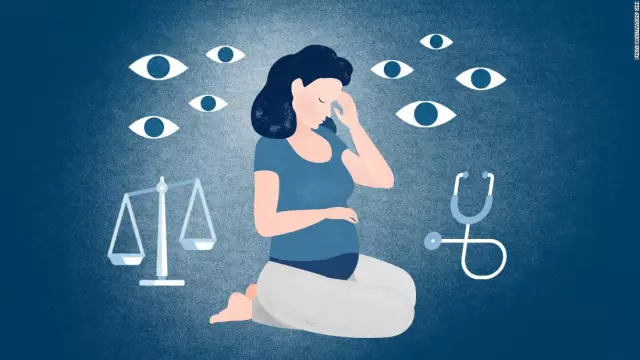- Author Curtis Blomfield [email protected].
- Public 2023-12-16 20:44.
- Last modified 2025-01-23 17:01.
It often happens in a woman's life that it is necessary to get rid of the onset of pregnancy. The reason for this can be both her personal considerations or capabilities, and medical reasons. More recently, abortion was performed only surgically, which resulted in many complications and consequences. Now the safest and most popular type of abortion is pill abortion.

Pilled abortion (its second name is medical) occurs with the help of taking medications, which are based on the drug "Mifepristone". This is a steroid that blocks progesterone receptors, causing the fetal egg to be rejected. The maximum time for which it is recommended to perform a pill abortion is 6-8 weeks or 42 days from the last day of menstruation. Moreover, the shorter the gestational age, the higher the chance that herthe interruption will proceed without complications.
How to get an abortion with medication
If a woman decides to terminate her pregnancy with medication, the first thing she should do is:
- take all the necessary tests (blood for HIV, hepatitis, etc.);
- in order to determine the exact gestational age and exclude ectopic pregnancy - do an ultrasound;
- take a swab from the vagina, rectum and urethra for testing for STIs.

In the case when there are no contraindications and the terms of pregnancy allow, a pill abortion is performed. In the presence of a doctor, a woman takes 3 tablets of the drug "Mifepristone" and remains under his supervision for about 2-3 hours, in case the components of the drug cause a negative reaction (allergy). Then, after about 36-48 hours, the patient needs to come to the hospital, where, to improve the effect, she needs to take 2 more tablets of Misoprostol. After that, bleeding will begin, which will indicate the beginning of an abortion. She needs to stay under the supervision of a doctor for at least 2-3 hours.
A mandatory condition after medical abortion is to visit your doctor 2 weeks after taking the medication. It is also necessary to undergo a second ultrasound, which will confirm or deny that the pill abortion was successful. Otherwise (with incomplete release of the fetal egg or continued development of pregnancy), additional medical intervention will be necessary. After doingunsuccessful abortion with drugs, the pregnancy cannot be maintained.
Not every woman can have a medical abortion, as it has a number of contraindications:

- under 18 and over 35;
- taking hormonal contraceptives or using an intrauterine device before pregnancy;
- presence of endometriosis or other diseases of the reproductive system;
- ectopic pregnancy;
- anemia;
- taking anti-inflammatory drugs;
- liver or kidney failure;
- presence of inflammatory diseases of the gastrointestinal tract;
- bronchial asthma;
- irregular menstrual cycle before pregnancy;
- heart disease;
- high blood pressure;
- drug allergy.
Although pill abortion is the safest among other types of abortion, some complications can also occur after it. For example, very often there is an incomplete rejection of the fetal egg, as a result of which surgical intervention is required. Severe uterine bleeding may also occur, which will also have to be stopped by intrauterine intervention.






